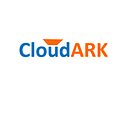Build your hybrid multi-cloud SaaS with no modification to your software
An ISV’s cloud native journey can be described in three phases as shown below. First phase is containerizing the software. If you are born in the cloud technology company, you probably have developed your software directly with containers and hence skip the containerization phase. If you currently have your offering supported on VMs, you first invest in containerizing your software stack for ease of packaging and distribution.
Next to create an offering with the containerized software, you need to package it for Kubernetes. You start with creating a Helm chart for deploying your software on a Kubernetes cluster. Then you can weigh the benefits of developing a Kubernetes Operator to embed domain specific configurations in Kubernetes native manner. The ultimate phase is to build a SaaS so that your customers don’t have to worry about managing your software and its day2 operations.
Hybrid multi-cloud SaaS presents a great opportunity for ISVs to tap into their untapped market. Our KubePlus SaaS Manager can help ISVs build SaaS without modifications to their software. You just give KubePlus link to your application Helm chart and it manages the rest. Each tenant or customer gets a separate instance of the application. KubePlus manages tenant-level consumption metering and provider / consumer role based access control behind the scenes. ISVs can also deliver their software as a managed service in a customer’s Kubernetes infrastructure and manage it remotely using KubePlus.
Our open-source KubePlus Operator runs on every Kubernetes cluster to deliver any Helm chart as-a-service by abstracting it under provider and consumer APIs. Then KubePlus Control Center running on a separate VM leverages these APIs to manage your SaaS across multiple Kubernetes clusters. Using this approach, ISVs can accelerate their SaaS journey without having to do any modifications to their software. KubePlus helps ISVs deliver multiple separate instances of their application with SaaS building blocks like provider & consumer APIs, multi-tenancy and consumption based metering. It supports namespace and cluster level multi-tenancy.
One of the most common architectures is to use a different cluster for each organization and then use namespace level multi-tenancy for multiple tenants within the same organization as shown above. This allows you to rapidly build and manage SaaS for your enterprise software maintaining desired separation between your customers or tenants.
To see hybrid multi-cloud SaaS in action for your application, we just need your Helm chart. Sign up for our free demo here.
